Posted
on 11:23 AM
in Hiroko's Blog
KYUSHU PREMIUM: KYUSHU WITH HIROKO 2021, November 3-15
This is the third Kyushu tour to be offered and conducted by Hiroko; This exclusive tour takes place in Kyushu, one of the most fascinating and important regions of Japan in matters of cuisine, foreign influence and history and geology. If you have been to Japan previously and perhaps experienced Tokyo and Kyoto, you will find the Kyushu experience enlightening, fascinating and, above all, enjoyable. If this is your first time in Japan, Kyushu provide the best historical and cultural introduction to the country.
This is one of many of such reviews from the attendees of KYUSHU PREMIUM 2019.
This trip exceeded all of our expectations! We most enjoyed going to the mountainous and rural areas of Kyushu. We were happy to be where most tourists don’t go. You introduced us not only to great Japanese cuisine in so many forms, but also to the Japanese people and their culture. It was a bonus to hike and to be close to nature on many of our outings. You have a special way of being organized and keeping the schedule, while allowing everyone to enjoy the experiences. Kyushu Premium was a trip of a lifetime! A&G
KYUSHU ‘PREMIUM’ is available to a small group tour of up to 10 people. The tour offers you the richest experiences in all aspects of Kyushu – activities, dining, accommodations and human contacts with the locals. Hiroko’s well researched knowledge and relationships in the region introduces the region and entertains all of your five senses throughout the experience. Today traveling in a foreign country, such as Japan, has become a lot easier with advanced technology, but KYUSHU PREMIUM explores areas that are not accessible to technology alone. It is all about the human relationships Hiroko has cultivated that makes KYUSHU PREMIUM so unique, memorable and enjoyable.
Please review the itinerary described in the accompanying document. Tariff and Application Form information will be available in late January, 20
Please review the itinerary described in this link; Please contact me for further with questions, Tariff and Application Form information.
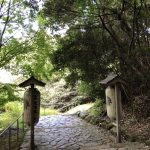
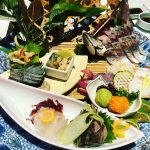



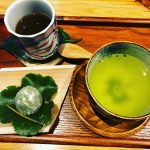



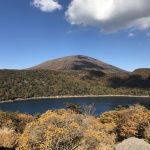

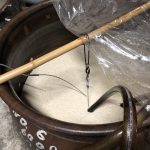
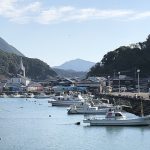
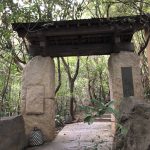
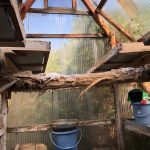

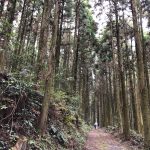
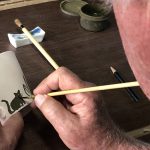

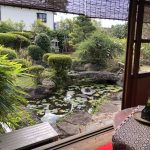

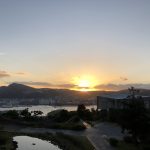
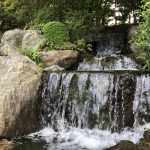

Posted
on 10:17 AM
in Hiroko's Blog, Recipes
KYUSHU PREMIUM
November 3 – 15, 2020
ABOUT KYUSHU AND KYUSHU PREMIUM
Kyushu, the southernmost large island of Japan, is chock-full of incredible interests of so many kinds. I had visited Kyushu in past years on business. During such trips I didn’t experience what inquisitive and interested visitors can do in Kyushu, so I had little idea of the huge variety of amazing sights and experiences Kyushu can offer to us. In 2017 I decided to make Kyushu the next destination for my annual tour to Japan. Thus, was born the initial idea for KYUSHU PREMIUM 2018. Since making that decision I have deeply studied the history, culture, natural environment, onsen hot springs, geology, food, art and people of Kyushu. Then, I carefully picked the places, each of which highlights the unique characteristics of Kyushu. In December 2017 I made this circuit on my own to absolutely confirm my expectations for the tour. This tour plan is the result of my study and exploration.
Some of you may have heard these Japanese culinary words: kabocha (squash), kara-age (a deep-frying method without batter), tempura (deep-frying method with batter), chawan’mushi (savory egg custard), kasutera (pound cake) just to name a few. These words describe foods and cooking techniques brought from abroad to Kyushu, reflecting the rich history of foreign influence in just the one area of culinary arts that extends back nearly 1500 years. This unique history of foreign influences and interactions is a major part of the fascination of Kyushu. It is very different from that experienced in the usual more familiar tourist precincts of Tokyo, Osaka, Kyoto, Kanazawa and Takayama.
Kyushu sits close to China and Southeast Asia. It was, therefore, the window for the introduction to Japan of Asian culture and religion in the earliest years of the first millennium. Kyushu is also the closest sea access to Europe, and it became the window to European civilization, including Christianity, beginning in the early 16th century. The strong influences of these early international contacts remain present everywhere in the island and its culture to this day. We will see and experience them on this tour.
Kyushu is well known as hot spring heaven in Japan due to its unique geology at the intersection of two tectonic plates. Active volcanoes, Mt. Aso and Mt. Sakurajima, tell the history of the changing natural and geographic environment of Kyushu. Both beneficial and the causes of disaster, these volcanoes determine much of Kyushu’s human and natural history. A particular consequence of their presence is natural glory found throughout the island.
Kyushu’s Christian history is a story of introduction, prosperity, suppression, persecution and rebirth. We will see this miracle first-hand and explore this complex story at many locations and from many perspectives. What happened in Kyushu is unique in world history.
At this particular time when we live with growing international tensions visiting the Nagasaki Atomic Peace Park and Museum will remind us of the horror of atomic weapons and the need for maintaining world peace to preclude their use.
You may know that for 250 years beginning in the 17th century Japan was closed to the outside world with only the Dutch occupying a tiny island, Dejima (“separated island”), just off Nagasaki. That island compound has been faithfully recreated. It is not Disneyland, but is a living, fascinating and accessible historical site replete with Japanese and Dutch history.
A foundation of Japanese cuisine is dashi stock which is made by infusing kombu (kelp) and katsuobushi (skipjack tuna) flakes. Katsuobushi comes from the town of Makurazaki in Kyushu. A visit to a factory that produces this indispensable material will reveal the fascinating traditional, artisanal production of katsuobushi. Without seeing this, you cannot say that you know Japanese cuisine.
An equally fascinating and delicious product of Kyushu is shochu, the distilled liquor made variously from rice, barley, sweet potato, potato, brown sugar and more. During the tour we will taste different varieties of shochu as we move from one area to another; the tour will make you a shochu expert.
Please enjoy the itinerary described in this package and join me on KYUSHU PREMIUM 2020; fascinating, educational, fun, active and delicious tour to Kyushu! I look forward to experiencing all of the sights and activities described in this document with you in Kyushu.
For those who are interested in receiving further information such as tariff, application form and payment terms, contact Hiroko.
January 21, 2020
Hiroko
KYUSHU PREMIUM
www.hirokoskitchen.com
25 West 15th Street
New York, NY 10011
212-727-3085
646-346-3991 (mobile)
@hirokoshimbo (Instagram)
KYUSHU PREMIUM 2020: ITINERARY
November 3, Tuesday
Check in yourself at the Haneda Excel Hotel, Tokyo. The room is booked for you. Join Hiroko at 8:30PM for an after-dinner coffee/tea orientation at HOSHI room at FLYER’S TABLE restaurant in the hotel.
November 4, Wednesday
We take an early morning flight to Oita Airport. We visit Kunisaki Peninsula, located in the northeast area of Kyushu, which is known for ancient, unique Buddhist culture. We participate in-a-once-in-a-life time Buddhist ritual service at Monju-Senji Temple, which was founded in 648 AD. The priest, tending a large ritual fire, prays for our health, family happiness and good weather & safe journey through out our tour. We stop at the Tennenji Temple, hike and admire Magaibutsu, Buddha sculptures carved into the rock cliff. We head to Beppu, one of the most famous hot spring towns in Japan for one-night stay.
November 5, Thursday
Today we head to 290 years old Kurokawa Onsen, a hot spring town that has 30 traditional Japanese inns, equipped with rotenburo (outdoor hot spring), scattered deeply in natural beauty alongside the Tanohata River. We stop at Kokonoe Yume Otsurihashi, the highest suspention bridge only for walkway built in in 2006. The beautiful nature is 360 degree view. After arriving we experience Outdoor Onsen-Hopping. We also enjoy local specialty Sake/Shochu-Hopping. The charming inn which we stay is closed to our group.
November 6, Friday
Today we fully enjoy the beauty of the nature in this region; walking, (bicycling), picnicking; we continue to enjoy Outdoor Onsen-Hopping & Sake/Shochu-Hopping if you haven’t completed it the day before.
November 7, Saturday
Today we visit Aso caldera. Aso volcano is a cluster of volcanoes situated within a huge caldera that is 25km (15miles) north-to-south and 18km (11miles) east-to-west. Its history extends back nearly 300,000 years consisting of complex volcanic activities and mountain growth. The area is part of the Aso National Park known for its beauty and grandeur. We visit the Aso Museum and watch a video to learn how the Aso caldera was created. This is followed by a climb up Kijima-dake providing awesome views across the entire Aso caldera. After lunch our coach takes us south to historical town of Hitoyoshi where we stay one night.
November 8, Sunday
This morning at the historic town of Hitoyoshi we take a man-poled boat ride down the Kuma River, which boasts of having the 2nd most rapid current in Japan. The same ride in the same kind of craft the local Daimyo, Aira, took in feudal days to go down-river in order to begin his biannual trip to Edo (present Tokyo) to pay his respects and tribute to the Shogun. After lunch our coach takes us to Onami-Ike, a beautiful crater lake which stands at 1,411 meters (4,500 feet) above sea level. Onami-Ike Crater Lake was the product of a volcano eruption about 40,000 years ago. The water is cobalt blue. We enjoy walking on a trail through the woods to the top of the Onami-Ike to admire the beautiful lake. After the walk we head to two nights stay at a venerable Japanese Inn, a Relais & Chateaux property.
November 9, Monday
Today we head down to the prefecture where the most indispensable Japanese food product is produced. It is katsuobushi (stone-hard, dried, smoked skipjack tuna). The infusion of katsuobushi and kombu (kelp) makes dashi stock, the foundation of Japanese cuisine. We visit the Matoba katsuobushi plant and learn and see the fascinating traditional, artisanal production of katsuobushi. We then visit award winning, family owned, small shochu brewery, Yoshinaga Shuzo, established in 1905. Even the bottling and labeling are done manually at this artisanal shochu producer. And, of course, we taste varieties of their products and you can purchase a bottle or two to take home.
November 10, Tuesday
Today we make an exciting transition from the mainland Kyushu to Amakusa island. Amakusa, which is located at southwestern part of Kumamoto Prefecture, is an island group consisting of two major islands and 100 other islands varying in size. Amakusa is remote. This isolation allowed missionaries in the 16th century to convert a considerable percentage of inhabitants and even the local lord to Christianity before the religion was forbidden in the early Edo period during the 17th century. Today there are museums and churches spread across the islands which reflect this religious heritage.
November 11, Wednesday
Today we visit a salt farm. We then have a pleasure easy-short walking up to the top of Tenjiku Mountain, and enjoy a picnic. We head to Takahama Porcelain Company and each of us makes our own glazing design on a bare previously baked mug. The mug will be fired and become a souvenir of your Kyushu adventure. Amakusa jiki, the raw material for Takahama porcelain, was discovered in this area in the 17th century. It is known for its pure whiteness and solid nature. The quality of the clay has been highly praised as the best porcelain clay in the world. It has been used for years to make the highest quality Japanese porcelain goods such as Arita-yaki (Arita ware) and Seto-yaki (Seto ware).
November 12, Thursday
Today we say goodbye to Amakusa and head to Nagasaki by boat. We visit Kofukuji Temple, Obaku Zen temple. Kofukuji Temple dates to around 1620 when the merchants from China’s Ming Dynasty began to arrive in Nagasaki. A Chinese priest founded the temple to pray for safety in the perilous sea journey from China to Japan. We then head to Dejima Museum on foot. Dejima (“separated island”), the tiny man-made island just off the shore and connected by a foot bridge to Nagasaki, was constructed in 1636 and was used to house Dutch traders for 250 years during the Edo period (1600 – 1868) when Japan was closed to the outside world. The island itself disappeared with more reclamation of the land from Nagasaki Bay, but now island compound has been faithfully recreated as the Dejima Museum on its original, now a land-locked site. It is not Disneyland, but is a living, fascinating and accessible historical sites replete with Japanese and Dutch history.
November 13, Friday
Today our guide, a native of Nagasaki, takes the group to the must-see places in this historic city. These include Nagasaki Atomic Bomb Museum, Peace Park at “ground zero” and Uragami Church. She takes us to a tonkatsu lunch. After lunch the coach drives us to the Nagasaki station. You have free afternoon to discover the city own your own.
November 14, Saturday
Today we leave for our final destination, Fukuoka, on the northwestern coast of Kyushu by train. Fukuoka is Kyushu’s largest and Japan’s 5th most populated city. Because of its closeness to the Asian mainland, Fukuoka has been an important harbor city for many centuries. We visit a Ohori park and enjoy a beautifully landscaped Japanese tea garden or visit Fukuoka Art Museum in the park. Fukuoka is a gourmet paradise…providing you are not a strict vegetarian. Motsu nabe (intestine and tripe hot pot), tori-suki (chicken hot pot) and very fresh seafood from the Genkai Sea are abuntant. Fukuoka-style tonkotsu (pork bone-based broth) ramen is also unique & famous, and now popular in US ramen restaurants. There are yatai (outdoor food stalls) offering delicious, home-style comfort foods that are unusual elsewhere in Japan.
November 15, Sunday
Our tour dissolves after breakfast. Those who continue to post-tour locations or those who depart for home, have a safe and pleasant trip. Whatever your destinations the mug you created in Amakusa will meet you at the arranged place. Please cherish your Kyushu memories for the rest of your life!
(more…)
Posted
on 8:07 PM
in Hiroko's Blog
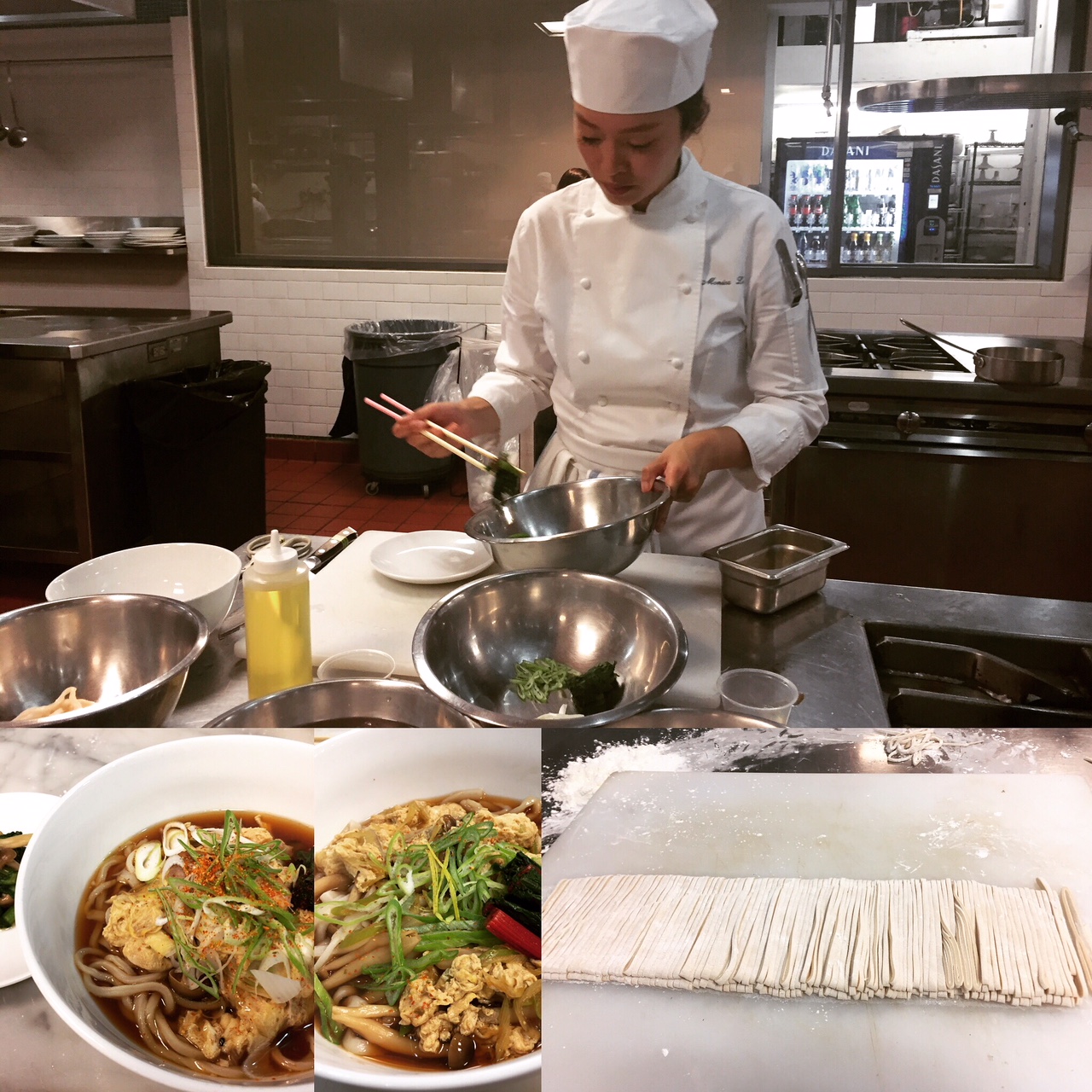
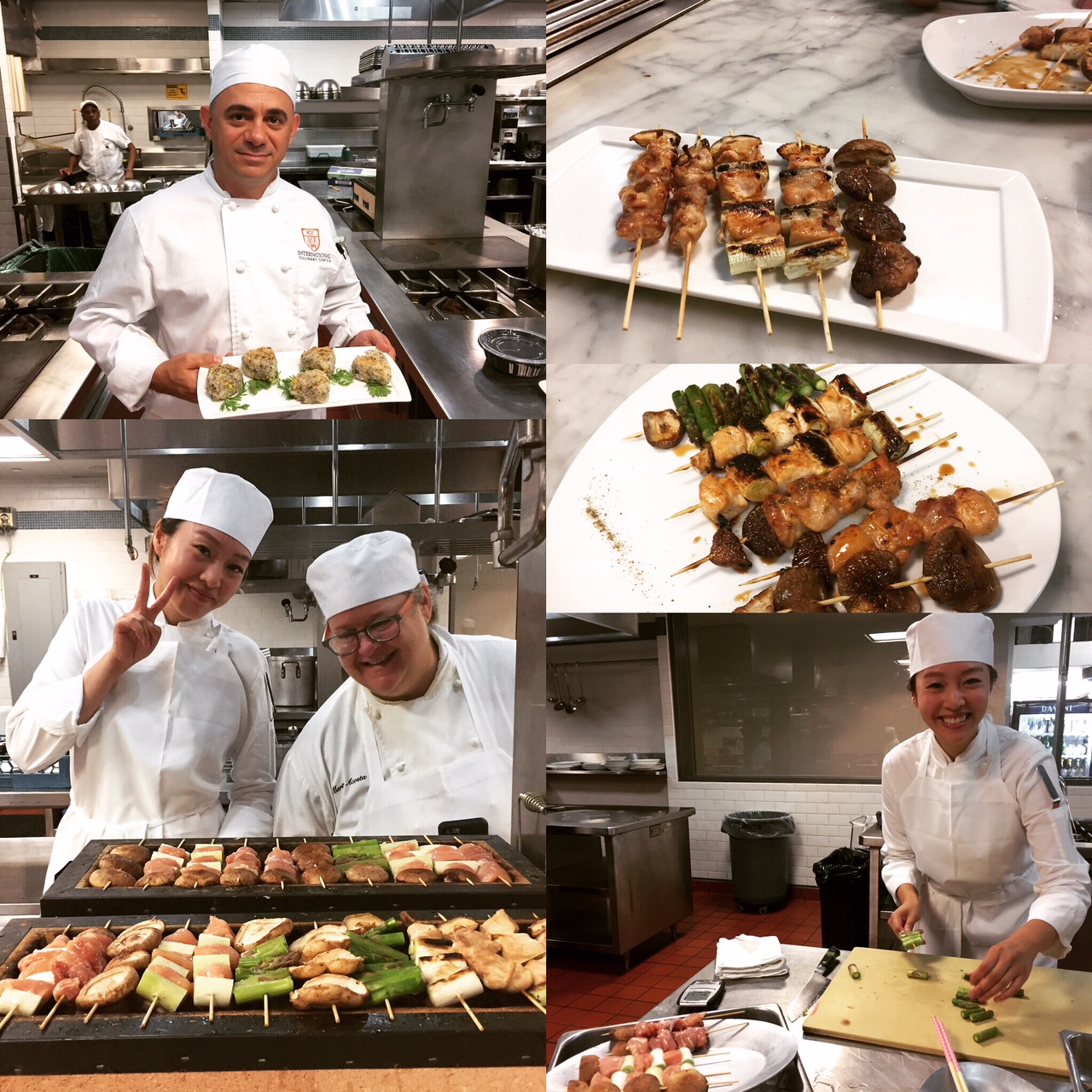


Learning the Art & Pleasure of Japanese Cooking with Hiroko Shimbo
2019 THANKS
Japanese Cooking Classes and Courses at International Culinary Center, 2019
Thank you to those who attended the 5-day Essentials of Japanese Cuisine, one-day Ramen Class and one-day Sushi 101 at International Culinary Center in New York City.
I loved meeting you all, sharing the expertise, cooking together and savoring the results with you!
2020 PLANS & SCHEDULES
Making 2020 the Year for Cooking at Home
We talk about caring for family, friends and the earth all the time. But often we are actually only talking about our own wellness in contrast to that of family, friends and the earth. Cooking at Home can help to some degree to adjust this attitude and bring ourselves to real wellness and harmony with the world around us. When we cook at home, it can begin with personally doing some shopping in our neighborhood community. This gives us awareness of all the involved beings in this universe – the people who sell, produce and transport the food we buy and consume. I know these days many busy people have little time for shopping, but we should make some effort, even a little, to do this. Personally obtaining the food we eat and recognizing those responsible can provide more than a faceless and impersonal online order.
Buying seasonal ingredients locally at farmers markets or at local stores not only support the local economy, but also remind us to offer appreciation towards everyone that helped to bring such ingredients to our shopping bags; nature, farmers, truck drivers, store staff,….. When we shop locally for ingredients by ourselves, we can also decide to use fewer or no unnecessary plastic bags or containers. Every time when we shop in this way our awareness of our environment becomes stronger and stronger.
Cooking is truly labor; cooking is time consuming; cooking involves processes without short-cuts. And cooking is not a competition. Who wants to consume a meal that has been prepared by someone who dislikes or doesn’t care much about cooking and shopping and rushed to prepare the food through as many short-cut processes as possible with artificial ingredients to speed and simplify the process? Well, such meal won’t nourish us literally or spiritually.
So, please join me in 2020 to discover the labor and joy of cooking at home. They are inseparable. That adds beauty to our lives.
Love,
Hiroko
Japanese Cooking Classes and Courses at International Culinary Center, 2020
Below is my teaching schedule at the International Culinary Center in New York City for 2020. Please do not fail to join me for these most enjoyable and educational classes. Let’s cook together for our enjoyment and well-being. Register the for the Course and Classes before they are sold out!
The Essentials of Japanese Cuisine: 4/13/2020 – 4/17/2020
https://www.internationalculinarycenter.com/new-york-campus/amateur-classes-ny/essentials-of-japanese-cuisine-with-hiroko-shimbo/
This yearly 5-day course is chock-full of essential information and provides the experience of hands-on preparation. Through this course you will acquire knowledge and mastery of the preparation techniques of Japanese cuisine.
- Philosophy and history of Japanese cooking
- Basic Japanese ingredients – kombu, katsuobushi, shoyu (soy sauce), mirin, miso, komezu (rice vinegar), sake, sea salt, rice
- Japanese noodle dish – udon made from scratch
- Home meals and formal meals
- Grilling techniques using special bincho-tan charcoal
- Simmered dishes – fish, vegetables and chicken
- Rice preparation and dishes – everyday rice table rice, takikomi gohan (rice cooked with seasonal vegetables and/or protein), mixed rice (rice mixed with flavoring ingredients)
- Sushi 101 – the basics of sushi preparation
- Advanced sushi – filleting a whole fish, sashimi, making nigirizushi (the familiar block of rice topped with an ingredient)
RAMEN 1/30/2020 & 9/17/2020
https://www.internationalculinarycenter.com/new-york-campus/one-day-classes-ny/ramen-gyoza-with-hiroko-shimbo/
This one-day Ramen class provides the information and hands-on experience for making delicious ramen and gyoza dumplings. After taking this class you will acquire knowledge and master the techniques of the world of ramen;
- History of ramen
- All about ramen
- Preparation of basic broth
- Ramen noodles from scratch
- Chashu pork
- Miso-tare and shoyu-tare (two ramen stock flavoring sauces)
- Assembling a ramen dish
- Ramen accompaniment: Traditional pork and cabbage gyoza dumplings
SUSHI 101 6/25/2020
https://www.internationalculinarycenter.com/new-york-campus/one-day-classes-ny/basics-sushi-hiroko-shimbo/
This one-day Sushi 101 class provides the information and hands-on experience for making delicious sushi rolls, including both traditional and modern inside-out rolls. After taking this class you will acquire knowledge and master the techniques of basic sushi-making:
- History of sushi
- How to perfect the making of sushi rice
- Sweet simmered shiitake mushrooms
- Sweet pickled ginger
- Making Japanese rolled omelet (tamago)
- Making thin rolls
- Making inside-out rolls
Posted
on 1:30 PM
in Hiroko's Blog

Thank you for loving my first and most widely selling book “The Japanese Kitchen’ for over 21 years. As a definitive work on the art of Japanese cuisine and its preparation, “The Japanese Kitchen” has received many awards. But most importantly, it was cherished by many of you who love Japanese foods and culture. A few weeks ago, I received unexpected information from the Quarto Knows the current publisher and rights owner who purchased the original publisher, Harvard Common Press, when I attempted to re-order my book in the face of continuing orders for “The Japanese Kitchen”. “The Japanese Kitchen” is now sold out and won’t be reprinted by the current publisher.
“The Japanese Kitchen” is the first of my three cookbooks. It took more than four years for me to write the book. From the beginning I was aiming to publish it in America even though at that time I was not living in the US. I wanted to convey the art and pleasure of Japanese cooking to an American audience, which, until my book appeared was largely ignored. I did much field research to write this book and I enormously enjoyed learning so much especially about the production side of Japanese ingredients. I selected excellent food producers and visited many of them. They welcomed me and taught me with their generous open minds. All of them are small-scale, family owned and respectful artisanal producers. The knowledge shared with me by them became the backbone of this book and my future career. My thanks never stop being extended to these generous, sincere and lovely people: Mr. Iio, Mr. Sumiya, Mr. Kitani, Mr. Nemoto, and others.
I began writing the manuscript of “The Japanese Kitchen” in English during the research period in Japan. Back then my English skills in both writing and speaking was terrible. Buzz, my husband, who was in-house editor in addition to his own non-food related business, edited my words, grammar and sometimes strange sentences. This editing continued until I finally completed my research and first draft. There was no more update necessary in the manuscript. Though he jokingly complained about my poor writing, he never gave up the editing task as I continued to revise the manuscript. My thanks never stop being extended to Buzz.
Publishing a book in what seem the distance past but is only 20 some years ago was completely different from today’s practices. I visited New York City, the hub of the publishing houses, several times just to knock the publishers’ doors. All such visits ended in rejections. “The Japanese cookbook has very small market and we are not planning to publish a Japanese cookbook.” was always the answer to my cold-call visits. But through this experience I soon learned that I must have an agent who could find a home for my manuscript. It sounded easy and straightforward but finding the right cookbook agent was nearly as tough as finding a publisher. One literary agent agreed to take the manuscript, but after months of failed attempts, she gave up and the manuscript was returned to me with a bite marks by her dog; another desappointment. By this time my book had already received over 30-40 rejections from across all level of the publishers.
I was desperate; I was younger then; and I was determined to publish my baby. One day I attended a lecture offered by Lisa Ekus, a well-known person in the food industry. Her topic was “How to publish your book!” At the end of the lecture I approached Lisa and told her the whole story of my book’s creation and history of rejections. I begged her to help me. She did so by later introducing me to Bruce Shaw, the owner of Harvard Common Press, based in Boston. Bruce accepted my manuscript for publication. My agent returned to take care of the business matters with the publisher and in 2000 “The Japanese Kitchen” was born. So, my thanks to Lisa, Bruce and my agent never cease to be extended.
Harvard Common Press was absorbed by Quarto Knows publishing house. Bruce Shaw while owning and operating Harvard Common Press promised that the printing of “The Japanese Kitchen” would continue indefinitely. I, for a short time, thought of contacting Dan Rosenberg at Quarto Knows, but I decided to let it go. Life is impermanent. Everything has beginning and end. Birth and death.
In this letter I celebrate the life of “The Japanese Kitchen”. It brought me relationships with many people with whom I never would have imagined I could connect. It brought me confidence, pleasure and an appreciation of life. If you own “The Japanese Kitchen”, no matter where you are, please continue to use, enjoy and take care of it.
I am planting a small seed for my fourth book. It is still in the research and study phase. I hope this new baby will be welcomed to your home and kitchen when it is born.
Thank you,
Hiroko
Posted
on 2:57 PM
in Hiroko's Blog
Here is a great opportunity for those non-Japanese chefs living abroad who want to commit 8 months to study the Japanese cuisine – seriously – here is a program: Japanese Cuisine Training Program, subsidized by the Ministry of Agriculture, Forestry and Fisheries, Japan.
Those who can apply:
- Non-Japanese living in Japan or abroad
- Over 18 years old
- Having language proficiency (both written and spoken) in English and/or Japanese
- Having financial ability to support own living in Japan during the program, outside what are supported by the program
- Conducting courtesy, integrity, good manners, good discipline and respect for the needs of others
- Having physical/spiritual health
- Having basic knowledge and skills of cooking and strong motivation to learn Japanese cuisine
- Having responsibility of participating and completing all courses of the program
- Contributes to promoting Japanese cuisine, food culture and Japan-produced ingredients after participating in the program
- Tattoo – not recommended
Program contains:
- July 1 Opening Ceremony
- Japanese Language School study from July 3 – July 19, 2019
- Group training of basic Japanese cuisine at Japanese cooking school July 24 – August 30, 2019
- Individual training at restaurant September 2, 2019 – February 23, 2020
- Final Examination February 26, 2020
- Graduation February 27, 2020
Expenses supported by the Program:
- Round trip air ticket
- Tuition for the Japanese language course
- Tuition for the Japanese culinary school
- Accommodation during the stay in Japan
- National Health Insurance expense during the stay in Japan
Note: If you quit the Program at any time during the Program Term you will be asked to pay your airfare, language course, culinary school, etc.
Submission of application and screening:
Send e-mail to TOW (below) to request application form.
nihonshoku@tow.co.jp
- Application form
- Graduate certificate of culinary school (if graduated from culinary school)
- Copy of passport
- Recommendation letter from the present employer
- Pledge form
- Medical examination report
Those who passed the first document screening will be notified to have a Skype interview. Final result will be announced by mid of May, 2019.
‘Learn as if you were to live forever’ M. Gandhi
Best regards,
Hiroko
Posted
on 1:12 PM
in Hiroko's Blog
COMPETITION
Click above to see the complete information.
Compete in The 7th Japanese Culinary Arts Competition;
The theme of the 7th Japanese Culinary Arts Competition is SHOKU NO HANAYAGI. The objective of SHOKU NO HAYANAGI is the achievement of a beautiful and exciting presentation for each prepared dish. The harmonious display of the five colors, red, green, orange, white and black in the prepared food itself including its container is essential to achieving this goal. Chefs utilize these five basic colors to create presentations that appeal to the diner’s eye and entertain other senses to maximize the dining experience.
The competition is conducted in two phases. The contestants first compete at a regional level at one of the four world-wide regions outside Japan. The winners of the regional competitions are invited to Japan, expenses paid, for the final competition to be held in Kyoto.
Regional Competition Cash Prize: Winner 50,000 yen, 2nd prize 30,000 yen, 3rd prize 20,000 yen
Koto Final Competition Cash Prize: Winner 1,000,000 yen
How to apply and compete in North America Competition:
- Create three recipes for four serving portions with focus on SHOKU NO HANAYAGI, including the use of the five basic colors to create exciting and appealing presentations. The dishes much be produced using three classical Japanese preparation techniques. Takimono (simmered dish), Yakimono (grilled dish), and Agemono (deep-fried dish). One dish from each category is required. The total food cost for four portions of the three dishes should be 8,000 yen (around $73). Photos of the created dishes should be taken, selecting the best photo of each for submission.
- Visit https://www.culinary-academy.jp/jpn/compe/form/entry/ and register by filing in the ENTRY FORM. Submit three recipes with accompanying photos. The deadline of the submission is September 30, 2019. The screening process will select six contestants in North America Region.
- North America Regional Qualifying Competition is held on January 13, 2020 at Institute of Culinary Education, New York.
Posted
on 3:57 PM
in Hiroko's Blog

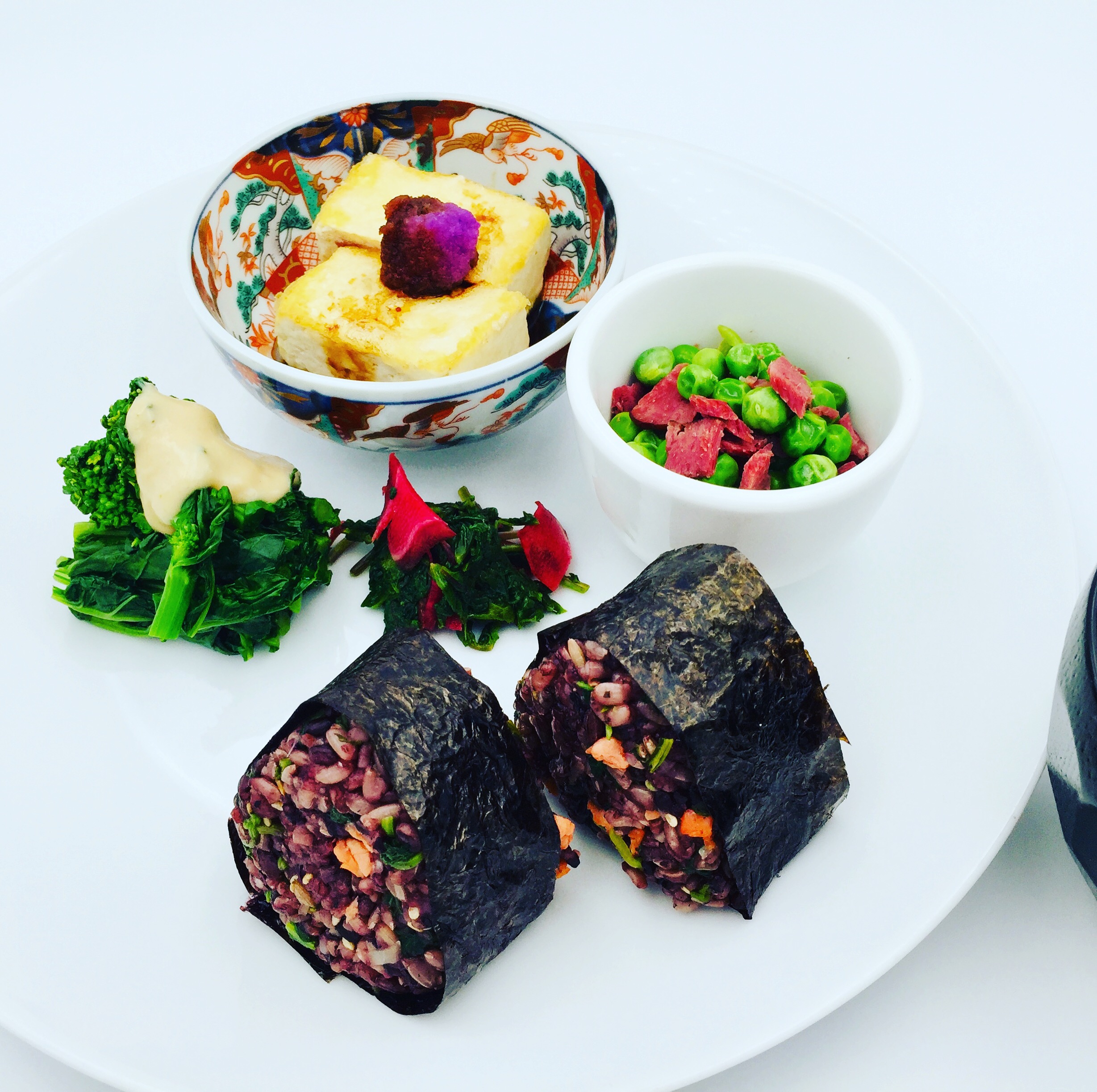
 I have been posting photos on my Instagram of some ICHI-JUU SAN-SAI presentations, a Japanese technique for achieving balanced, nutritious dining. If you are new to ICHI-JUU SAN-SAI, it is an ideal meal structure for everyday home meals that has been conceived and tested in Japan by centuries of experience with nutrition and dining satisfaction. ICHI-JUU ??means ‘one soup dish’; SAN-SAI means ‘three side dishes’. You may find that something is missing from this basic Japanese meal structure. There is no bowl of rice. Rice is so indispensable and important in our diet that it is not counted in this menu prescription. A plate of pickles and bowl of rice is assumed to be part of the meal. So, when you make a complete count for an ICHI-JUU SAN-SAI meal, you will find six dishes in total.
I have been posting photos on my Instagram of some ICHI-JUU SAN-SAI presentations, a Japanese technique for achieving balanced, nutritious dining. If you are new to ICHI-JUU SAN-SAI, it is an ideal meal structure for everyday home meals that has been conceived and tested in Japan by centuries of experience with nutrition and dining satisfaction. ICHI-JUU ??means ‘one soup dish’; SAN-SAI means ‘three side dishes’. You may find that something is missing from this basic Japanese meal structure. There is no bowl of rice. Rice is so indispensable and important in our diet that it is not counted in this menu prescription. A plate of pickles and bowl of rice is assumed to be part of the meal. So, when you make a complete count for an ICHI-JUU SAN-SAI meal, you will find six dishes in total.
The origin of ICHI-JUU SAN-SAI can go back to the simple meal in Japan that was served back in the 9th century, and some historian links it to HONZEN RYORI, the first elaborate banquet meal style developed in the 15th century. In any case, it is an ancient construction for a complete nutritious and appealing meal in Japan
ICHI-JUU SAN-SAI includes all necessary nutrients; carbohydrate from rice, protein from fish, chicken, meat or shellfish, and micro-nutrients from all other sources including vegetables and seaweeds. Every dish served in the ICHI-JUU SAN-SAI structure is presented in rather small and proper portion size. The meal is made more diverse through the use of seasonal ingredients. Because of this ICHI-JUU SAN-SAI can serve as an ideal meal structure model for all of us employing any cuisine, year-round.
When you are having thoughts about what to eat and how much to eat, think of creating your own ICHI-JUU SAN-SAI meal. This means that you are filling 6 bowls and/or plates with protein, carbohydrate and vegetables. Choosing 6 bowls and/or plates sounds easy, but there is one additional rule. To conform to the Japanese way, each piece should be in small enough so that all six of them can be placed inside 15 -16-inch square space on the table. Place six of your chosen bowls and plates on the square to check. Now you know how much food should be plated for each dish. Don’t be concerned if you have no small bowls and plates. You can, of course use one large dish to serve the three side dishes. One problem which you may face in this presentation is that something which contains liquid (for example, a salad dressed with a loose, runny dressing) will contaminate other dishes served on the same plate; well, this is not a big worry; perhaps you have one small bowl for that item. From the preparation point of view, it is a good idea to use minimally processed, good quality food product. I like items such as such as tofu, cheese and canned wild fish. Using such convenient food items makes preparation quick, easy and effortless.
My latest Instagram posts of ICHI-JUU SAN-SAI lunch and dinner sets include:
- Rice (I love cooking brown rice with red rice), miso soup, pickles; steamed fish, simmered deep-fried tofu and kale, daikon and persimmon salad
- Rice, miso soup, pickles; simmered fish, Chinese broccoli with sesame sauce, tofu salad
- Steamed fish with rice (2 dishes in 1), miso soup, pickles; mustard greens with sesame-kale sauce, duck prosciutto
- Onigiri rice ball, miso soup, pickles; “tamago” Japanese rolled egg omelet, tofu with scallion and ginger, collard greens with sesame sauce
- Rice, “tonjiru” pork broth miso soup (2 dishes in 1); tofu with sesame sauce, Chinese broccoli with ponzu sauce
- Onigiri rice ball, miso soup, pickles; tofu steak with grated daikon, green peas and ham, mustard leaves with sesame sauce
Enjoy these posts and construct your own ICHI-JUU SAN-SAI set from Japanese or any other cuisine. Be creative!
READ more about ICHI-JUU SAN-SAI:
https://allabout-japan.com/en/article/1508/
https://www.sushisushi.co.uk/blogs/education/why-is-japanese-food-considered-healthy
http://tsukiji-cooking.com/whatswashoku/
Posted
on 6:16 PM
in Hiroko's Blog

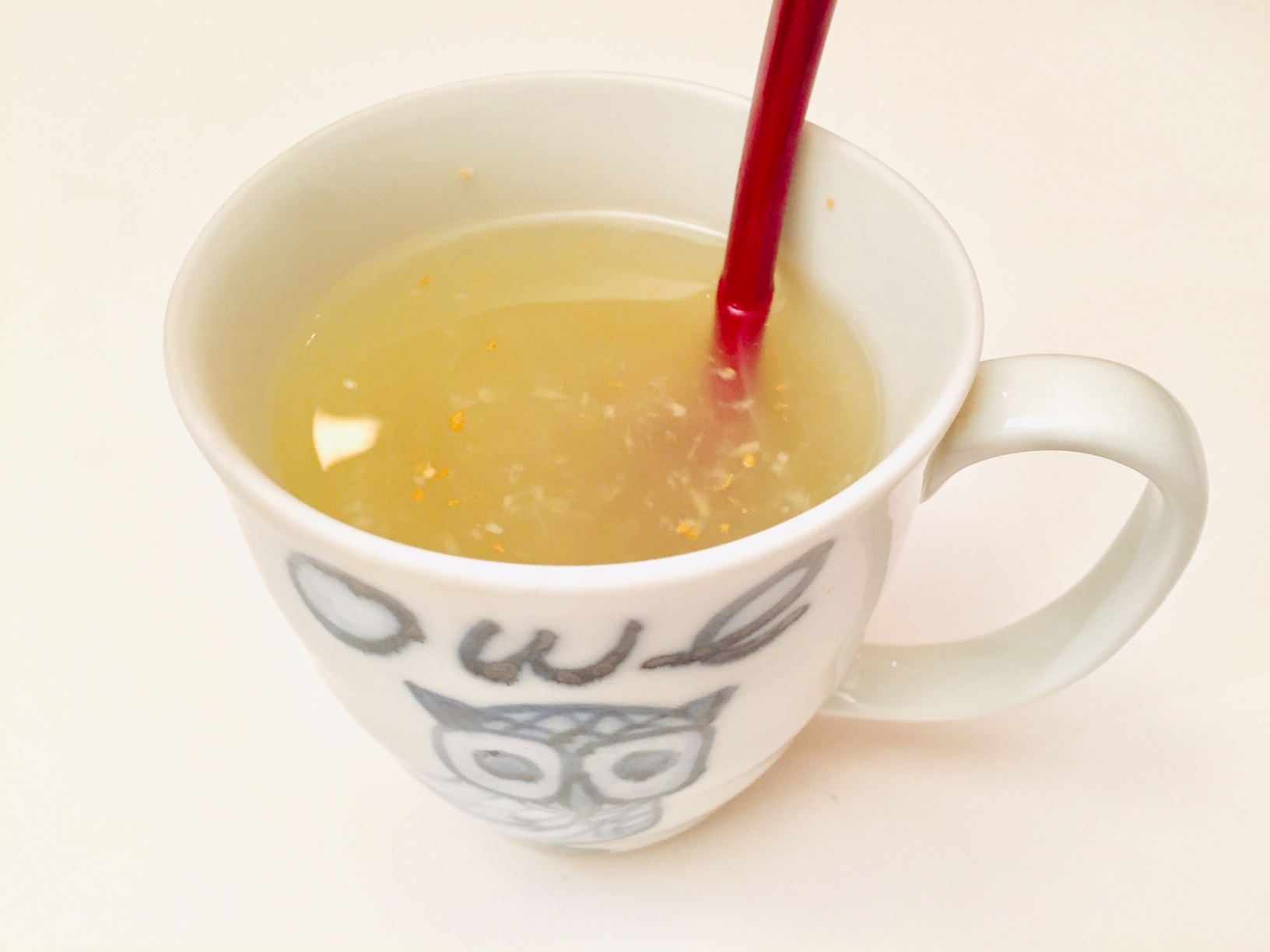 Is there anyone out there who has cold feet, hands or body; anyone who desperately wants to warm up? Make this simple hot drink. You need only three items. They are fresh ginger, honey and hot water. Grate 1 teaspoon of peeled ginger and add to your coffee or tea mug; add 1 teaspoon to 1 tablespoon of honey (if it is available get the locally produced honey); carefully pour in about 1 cup very hot water; stir the mixture; let it cool off a bit and then enjoy! Have this hot sip once or twice in the morning and perhaps before going to bed. It warms up your body and your mind.
Is there anyone out there who has cold feet, hands or body; anyone who desperately wants to warm up? Make this simple hot drink. You need only three items. They are fresh ginger, honey and hot water. Grate 1 teaspoon of peeled ginger and add to your coffee or tea mug; add 1 teaspoon to 1 tablespoon of honey (if it is available get the locally produced honey); carefully pour in about 1 cup very hot water; stir the mixture; let it cool off a bit and then enjoy! Have this hot sip once or twice in the morning and perhaps before going to bed. It warms up your body and your mind.
The very first time I ate gingerbread happened just several days ago on Christmas eve at our friend’s house. Growing up in Japan I had no connection to or affection for gingerbread even after living in New York City for 19 years. The taste of ginger which is so familiar in my Japanese cuisine actually tasted quite different in this new-for-me cake. Dried ginger powder as is used in gingerbread is not a Japanese kitchen staple, but the fresh rhizome certainly is.
Ginger, shoga, is one of the most representative spice used in the Japanese kitchen throughout the year. Shoga has been cultivated in China since antiquity and was introduced to Japan around the 2nd or 3rd century AD. The Japanese climate is a good fit for growing shoga and the cultivation of the rhizome began in the 7th century. In the Japanese kitchen shoga is always used fresh. To cook strongly flavored fish or meat we add sliced shoga to the pot. Shoga cuts off any overly strong flavors of the ingredients and produces an appealing and balanced flavor in the prepared dish. Shoga in Japan is used fresh – grated, finely julienned, sliced thin or pickled – to become a garnish for prepared dishes. It may be served as a condiment with a prepared dish. The fresh fragrance and spiciness of the rhizome awakens and entertains diners’ senses and is a very characteristic feature of the Japanese meal.
How was ginger chosen as the primary flavor in the cake or cookie that is called “gingerbread”? Ginger root traveled from China to Europe via the Silk Road during Middle Age giving the spice great value. Sarah Nelson’s Grasmere Gingerbread blog says that, “The legend of the Gingerbread Man has a long-established provenance in mainland Europe. It is thought to have first appeared at the court of Queen Elizabeth 1st who presented courtiers with gingerbread likeness of themselves at Christmas.” Sara also mentions that, “For the Chinese and Romans ginger was a symbol of wealth and fertility.” These may be some of the reasons why gingerbread came into being.
Ginger has long been known in China, India and Arab countries as a traditional herbal medicine. Those medicinal-use teachings were also introduced to Japan. We use ginger in Japanese preparations not just to awaken and entertains the diners’ senses, because of ginger’s many medicinal properties. One of them is that it is said to warm our bodies including our intestines and organs. Ginger also aids digestion, and as you may have heard, ginger calms nausea and vomiting. In the Japanese kitchen ginger is also known for its antiseptic and antibacterial properties. Grated ginger always accompanies oily fish sashimi such as aji (horse mackerel), sanma (Pacific pike) and iwashi (sardines) because these delicious, but oily fish are known to spoil rather quickly. The grated ginger helps to deal with any bacteria that might be multiplying in these fish.
Next year I will introduce you to more information about medicinal foods in the Japanese culinary tradition. Until then, let’s eat local and seasonal to maintain the health of both human beings and the earth. And no processed food by any means. Eat what nature gives us, not what the factory supplies.
Happy New Year!!! Dozo Yoi-Otoshi-O! and Akemashite-Omedeto!!!
HIROKO
Posted
on 10:11 AM
in Hiroko's Blog
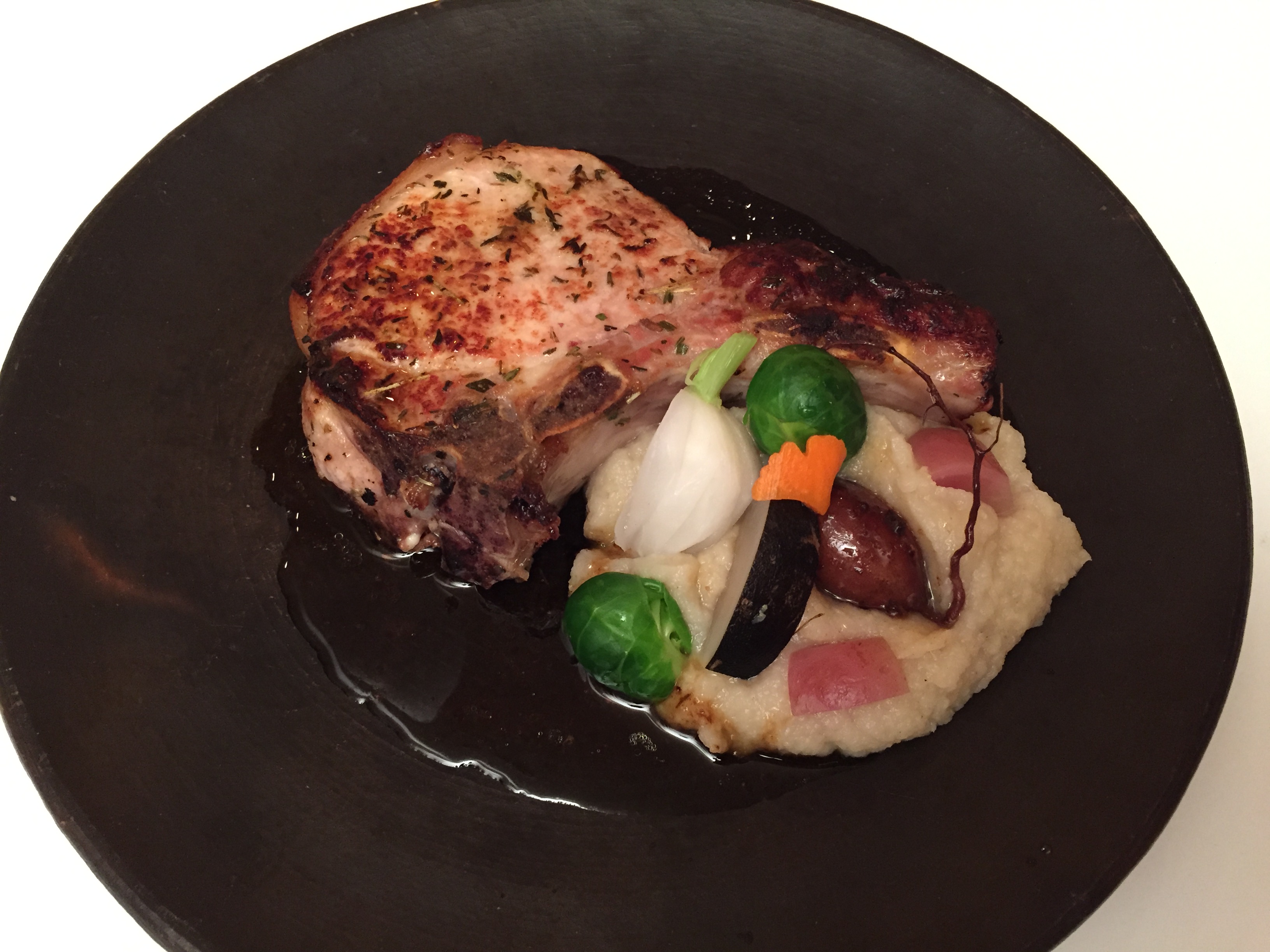
Super-quick Shio-koji

Super-Quick Shio-koji chicken
You may have tried shio-koji recipe which I have posted on June 12, 2012. I have been making it in this way until one day I found the fantastic short-cut way of making of this version from a Japanese cookbook written by Takako Nakamura. She has developed a super quick shio-koji recipe, which I call it Super-quick Shio-koji.
Super-quick Shio-koji takes only 1 hour to make; the old technique takes, as you have done it, for 10 days during winter time. It takes too long. So, here is how you make the Super-quick version.
You need an electric rice cooker. I use Zojirushi brand rice cooker, which is the best among many others. You need 1 tub of koji rice (576g), the same weight of lukewarm water (158F) and 190g sea salt.
Transfer the koji rice into a large bowl; toss them well with both hands to loosen them; add the lukewarm water to the koji rice and transfer them to the rice cooker bowl; set up the rice cooker at keep-warm function and leave the koji rice and water mixture for about 1 hour; transfer the koji rice and water mixture (it is no longer watery) to a clean bowl and mix with the salt. It is ready to use but you may rest it for a couple of days in the refrigerator for matured flavor. You may process the Super-quick Shio-koji in a food processor to make it into a smooth paste. Transfer it in a clean jar with a tight-fitting lid and keep it refrigerated. You can enjoy it about 3 months.
Super-quick shio-koji has mellow sweeter flavor than the conventional shio-koji. It is very handy; it keeps any meat and chicken cooked with it moist, juicy and flavorful.
The pork on the photo is painted with Super-quick Shio-koji and dried herbs one hour before cooking, and baked in the oven; the chicken on the photo is painted with Super-quick Shio-koji, maple syrup and cayenne pepper one hour before cooking, and baked in the oven.
If you complain that you have no time to make tasty dinner, try the Super-quick Shio-koji baked chicken or pork.
An important message: You pair the delicious baked Super-quick Shio-koji chicken or pork with seasonal vegetables. No tomato, bell peppers nor cucumber (even though you can purchase them at supermarket), please. These summer vegetables cool our body and not fit to our winter consumption. EAT LOCAL & SEASONAL and COOK OUR MEALS IN OUR OWN KITCHEN.
Posted
on 9:15 AM
in Hiroko's Blog

Kunisaki Peninsula with changing leaves

Seriously engaged in drawing patterns on a cup; wonderful art craft activity
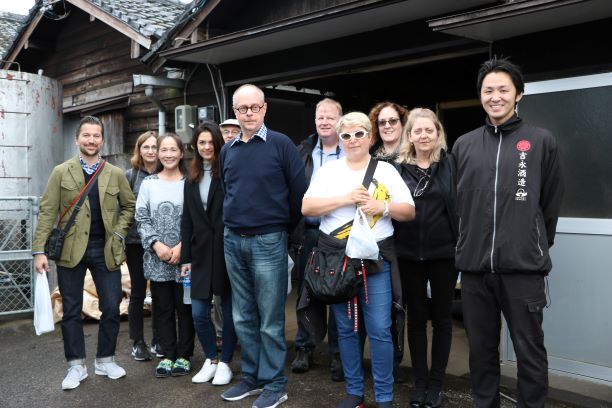
Visit to shochu brewery

it looks like a gem; it is katsuobushi
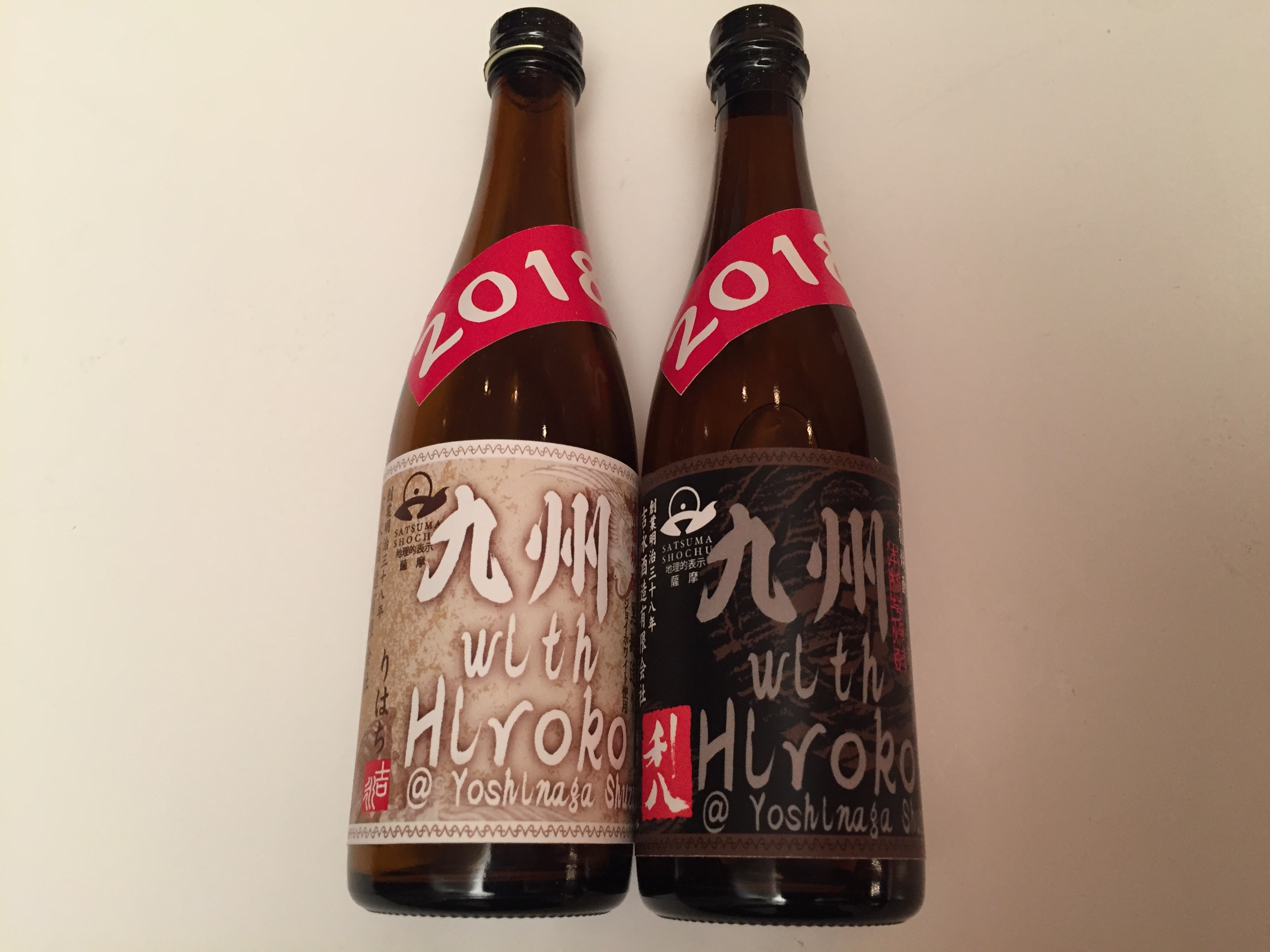
Kyushu with Hiroko Shochu gifts
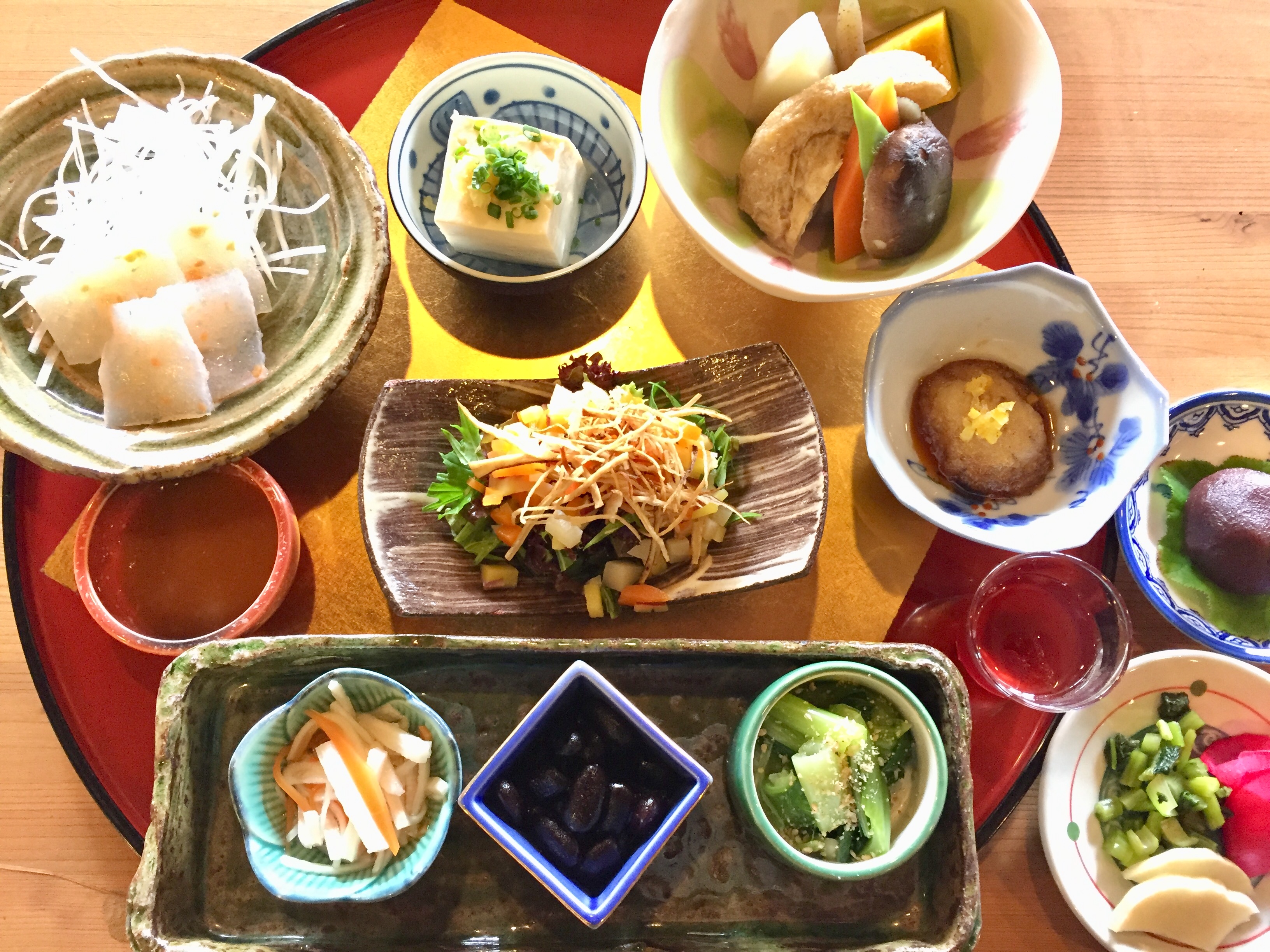
Vegetable lunch at 170 years old farm house

Before heading to Rotenburo onsen-hopping and sake/shochu hopping; what a fun
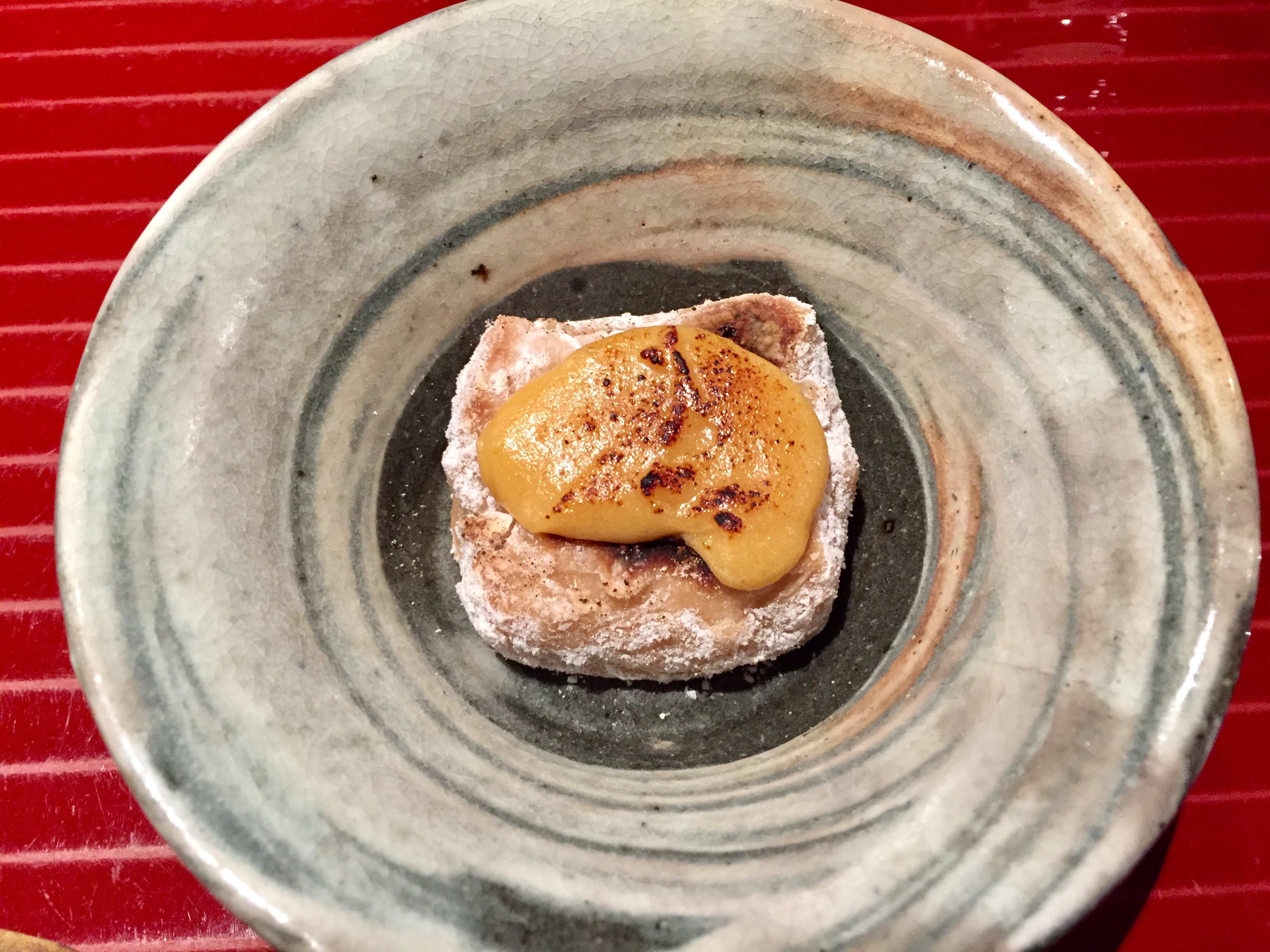
Vegetable dish reminded us of persimmon

Hike at Aso cardera; climbing up high gave us a beautiful view

Fun dengaku lunch; sitting around the charcoal fire
Kyushu with Hiroko 2018 with full 9 participants finished a grand tour with great satisfaction.
Please click the below link to see the collection of photos and video.
Activities varied from a special Buddhism service in Kunisaki Peninsula where they this year celebrates 1300th year Rokugo Manzan religious culture, to a Chinese cooking class, plunging in deep Onsen culture everywhere we went, a hike at Mt. Aso, a small boat ride in Kuma River, hiking to one of the most beautiful crater lakes in Kirishima, visits to katsuobushi (dried skipjack tuna) factory and shochu brewery, soaking in the hot sand bath, staying at Christian history-studded Amakusa island, observing how sea salt is made, engaging in art activity, two boat rides between the islands, enjoying a very special Temple Fucha Cuisine at Kofukuji temple, exploring the Dejima (Dutch trading post for 250 years) museum, learning atomic bomb history and riding on Shinkansen high-speed train and local trains. Along with all these experiences we ate through diverse cuisine at breakfast, lunch and dinner on our way. All accomplished in 12 days.
Below is the photo link to Kyushu with Hiroko 2018. Please enjoy it with family and friends. If you want to be part of the tour in 2019, send Hiroko an e-mail of your interest in the tour next year. Price and detailed information of Kyushu with Hiroko 2019 will be sent to you when available at the beginning of next year. Looking forward to traveling Kyushu with you in 2019! https://www.dropbox.com/s/80io78lcnqpwi60/Kyushu%20with%20Hiroko%202018_Small%20%282%29.mp4?raw1
 Hiroko’s Kitchen made it onto CulinaryPrograms.net’s recently completed list of 100 Magnificent Sites for Chefs.
Hiroko’s Kitchen made it onto CulinaryPrograms.net’s recently completed list of 100 Magnificent Sites for Chefs.






























 I have been posting photos on my Instagram of some ICHI-JUU SAN-SAI presentations, a Japanese technique for achieving balanced, nutritious dining. If you are new to ICHI-JUU SAN-SAI, it is an ideal meal structure for everyday home meals that has been conceived and tested in Japan by centuries of experience with nutrition and dining satisfaction. ICHI-JUU ??means ‘one soup dish’; SAN-SAI means ‘three side dishes’. You may find that something is missing from this basic Japanese meal structure. There is no bowl of rice. Rice is so indispensable and important in our diet that it is not counted in this menu prescription. A plate of pickles and bowl of rice is assumed to be part of the meal. So, when you make a complete count for an ICHI-JUU SAN-SAI meal, you will find six dishes in total.
I have been posting photos on my Instagram of some ICHI-JUU SAN-SAI presentations, a Japanese technique for achieving balanced, nutritious dining. If you are new to ICHI-JUU SAN-SAI, it is an ideal meal structure for everyday home meals that has been conceived and tested in Japan by centuries of experience with nutrition and dining satisfaction. ICHI-JUU ??means ‘one soup dish’; SAN-SAI means ‘three side dishes’. You may find that something is missing from this basic Japanese meal structure. There is no bowl of rice. Rice is so indispensable and important in our diet that it is not counted in this menu prescription. A plate of pickles and bowl of rice is assumed to be part of the meal. So, when you make a complete count for an ICHI-JUU SAN-SAI meal, you will find six dishes in total.
 Is there anyone out there who has cold feet, hands or body; anyone who desperately wants to warm up? Make this simple hot drink. You need only three items. They are fresh ginger, honey and hot water. Grate 1 teaspoon of peeled ginger and add to your coffee or tea mug; add 1 teaspoon to 1 tablespoon of honey (if it is available get the locally produced honey); carefully pour in about 1 cup very hot water; stir the mixture; let it cool off a bit and then enjoy! Have this hot sip once or twice in the morning and perhaps before going to bed. It warms up your body and your mind.
Is there anyone out there who has cold feet, hands or body; anyone who desperately wants to warm up? Make this simple hot drink. You need only three items. They are fresh ginger, honey and hot water. Grate 1 teaspoon of peeled ginger and add to your coffee or tea mug; add 1 teaspoon to 1 tablespoon of honey (if it is available get the locally produced honey); carefully pour in about 1 cup very hot water; stir the mixture; let it cool off a bit and then enjoy! Have this hot sip once or twice in the morning and perhaps before going to bed. It warms up your body and your mind.










